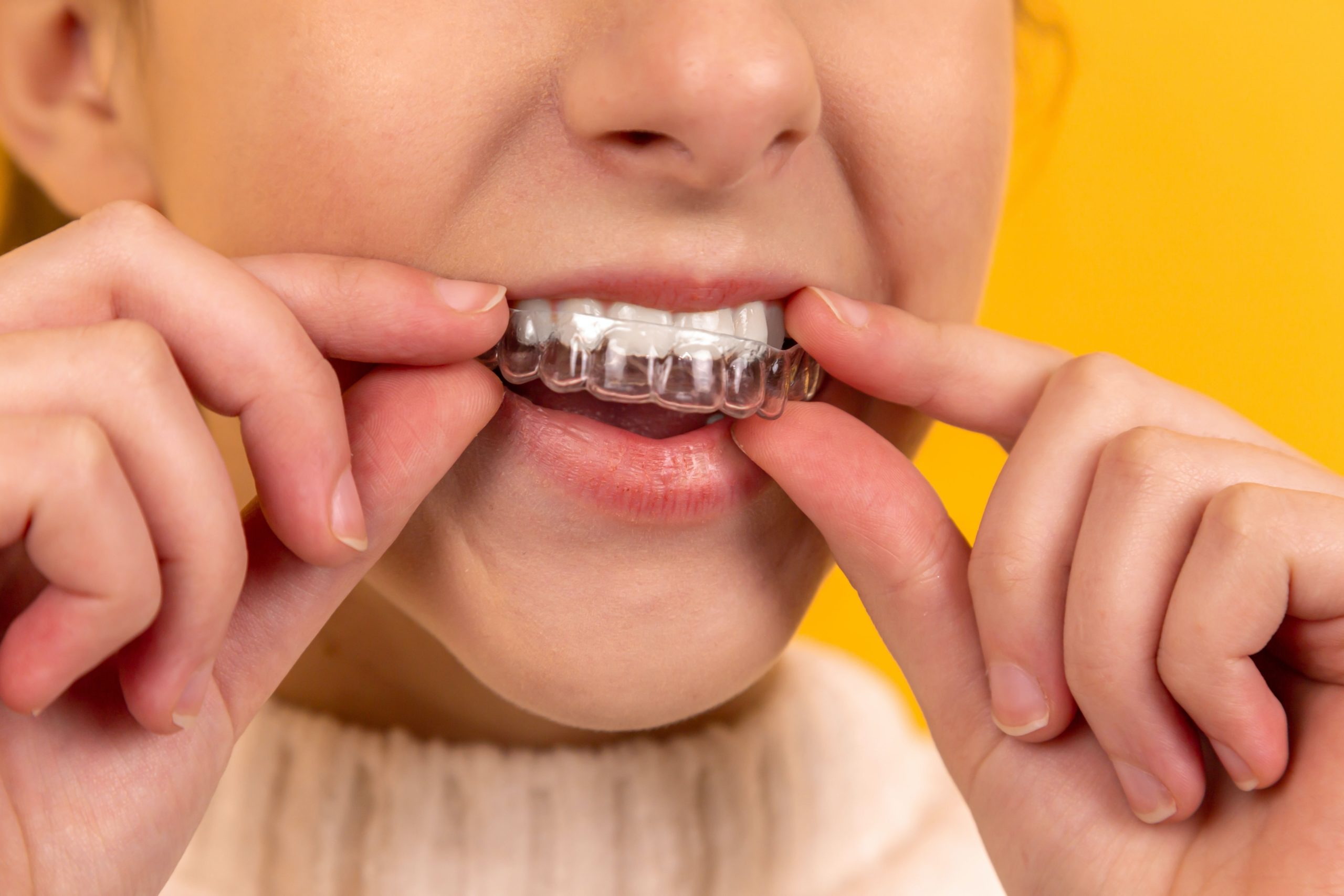
Everything You Want to Know Before You Get Dental Veneers
1. What are veneers?
Dental veneers are custom-made shells of tooth-colored material designed to cover the surface of teeth and improve their appearance. They are bonded to the tooth to change the shape, color, size, or even length.
Veneers are very thin and can be personalized to your teeth to ensure they are comfortable. They give your teeth a natural appearance, but will still enhance the features that you want them to, making them a great option for people that want a certain look.
They are typically going to last somewhere between 7 years and 15 years. After this, you would need to get them replaced by a professional to keep up the same look.
They don’t require you to provide exceptional care, so as long as you continue to follow proper dental hygiene routines, you’ll keep your new teeth coverings happy and healthy.
Common Types of Problems Veneers Can Fix
They can correct slight cosmetically unappealing features in your smile or mouth, but they are also used for more specific purposes.
Some of the reasons that you may want to consider them include:
- Correcting discolored teeth
- Closing gaps between teeth
- Correcting weakened teeth
- Correcting broken teeth
- Realigning teeth that are uneven or irregular
With the help of trained dental professionals, you can get the teeth that you’ve been dreaming about!
Procedure for Getting Veneers
You’ll likely need to take at least three separate trips to your dentist. The first visit is a consultation, the second visit is for preparation and construction, and the third visit is for application.
You have the choice to have the veneers process completed for one or more teeth at a time, so you can get it done all at once if you’d like.
First Visit: Consultation
During your initial visit, you will want to talk to your dentist about why you want veneers and what type of end goal you have for your teeth.
Your dentist will look at your teeth to see what type of dental veneers are appropriate for your mouth (if any) and will discuss with you what the process involves in detail. You will also get to learn about some of the limitations during this initial consultation.
If necessary, your dentist may also decide to take x-rays or make impressions of your teeth.
Second Visit: Preparation and Veneer Construction
For your tooth to hold a veneer, your dentist will need to do some work on your tooth surface. This will involve trimming off some enamel to make room for the veneer itself so that your mouth still feels natural after the last appointment.
You and the dentist will decide together if you need a local anesthetic to numb the area before they work on your tooth. Following this, the dentist will make an impression on your tooth or teeth. Then, the impression is sent to a dental lab that constructs the veneer for you.
Generally, this process will take at least a few weeks and the set will be sent from the lab back to your dentist before your final appointment.
Third Visit: Application and Bonding
During the last appointment, the dentist will make sure that the veneers fit and that the color is right before permanently bonding them to your teeth.
Your dentist will remove and trim the veneer repeatedly to make sure it fits. They may also adjust the color at this stage if it is necessary.
Next, your tooth or teeth will get cleaned, polished, and roughened before the bonding process to ensure they can stick permanently. A unique cement is used for this purpose as the veneer is placed on your tooth.
After the veneer is in position on your tooth, the dentist will apply a special light that activates the chemicals in the cement so that it cures quickly.
Your dentist will then remove any excess cement, double-check the fit, and make final adjustments if needed.
Your dentist might ask you to come back in for a final follow-up appointment a few weeks after this as well.
2. Types of veneers?
- Porcelain veneers
- Composite resin veneers
- No-prep veneers
What Is the Difference Between Porcelain and Resin Veneers?
The resin composite option is also made to match the look of your natural tooth and can be personalized to fit your smile. This material is also very durable and capable of lasting several years with proper care
However, Porcelain veneers resist stains better than resin veneers. They also better mimic the light-reflecting properties of natural teeth. You will need to discuss the best choice of veneer material for you with your dentist.
No-prep veneers
Because veneers are considered a permanent option, a dentist typically has to spend some time preparing your tooth for a veneer. This process can involve grinding down the tooth or removing part of the tooth, including some of the enamel, to make it ready to hold the veneer. Then, the veneer is bonded to the front of the tooth.
No-prep veneers are applied through a quicker process to make your teeth look more even. It takes much less time and effort to install them, and they still provide long-lasting results.
Benefits of no-prep veneers
Here are some of the reasons that no-prep veneers may be a good choice for you:
Improved result
No-prep veneers can improve the appearance of discolored teeth, fill in gaps, or cover up cracks or chips.
Less prep work
With regular veneers, a dentist might need to grind 1/2 millimeter of enamel off your tooth to make an impression to use for creating the veneer. That’s not necessary with no-prep veneers. There’s not a lot of prep work needed.
In some cases, a dentist can make a digital impression of your teeth and then create the veneers and install them all on the same day.
Easy installation
Because the dentist doesn’t have to alter your teeth, the installation is a much simpler process than the process of installing traditional veneers. Additionally, this method preserves your tooth structure trusted Source.
No anesthesia
Since the dentist isn’t removing any enamel from your teeth, you shouldn’t need any local anesthesia. That’s good news if you’re concerned about having a reaction or sensitivity to the anesthesia.
Long-lasting
No-prep veneers can last 5 to 7 years or longer, especially if you take good care of them. Some manufacturers claim that their no-prep veneers can last many more years.
Research suggests that this type of veneer can be a good choice for people who don’t want to put too much wear and tear on healthy teeth.
Are no-prep veneers reversible?
When you need a dental crown, a dentist typically has to file down and remove part of the outer layer of your tooth to prepare for the application of the crown itself. That means that your tooth has been permanently changed or altered.
Even with traditional veneers, a dentist may have to do some reshaping and alter the enamel before the veneer can be bonded to your tooth.
These processes aren’t considered reversible.
By comparison, no-prep veneers don’t require that kind of alteration to your tooth structure. Additionally, they can be removed.
They’re applied to the enamel of your teeth, so they can cause some damage to the surface of your tooth. While they’re considered reversible or semi-permanent, that doesn’t mean that your teeth might not be affected in some way by the procedure of installing (or removing) them.
You will need to discuss with your dentist if no-prep veneers are applicable in your case.
Precautions and potential side effects
There are a few things you might want to consider before deciding to get no-prep veneers.
No-prep veneers might not be the best choice for you if your teeth are extensively damaged. You may need more intensive treatment to give your teeth a uniform appearance.
The same goes if your teeth are deeply discolored or stained. No-prep veneers are often more translucent than traditional veneers. You may need something more substantial than this type of very thin shell to hide the discoloration.
You’ll need to focus on oral hygiene. You’ll need to be especially vigilant about cleaning your teeth around your gumline and removing any debris or bacteria that may slip in where the veneers meet your gumline.
No-prep veneers procedure
Here’s what you can expect from the installation procedure:
- A dentist will examine your teeth to make sure their structure is sound.
- They will make impression on your teeth.
- They’ll then make the veneers from the impressions.
- The dentist will hold the veneers up to your teeth to make sure they’re a good fit.
- They may lightly score or etch the surface of your teeth to give the veneer something to hold on to.
- Lastly, they’ll then bond the veneers onto your teeth.
3. Which type of veneer is best?
Compare those factors
| Cost | 500-1500 per tooth |
| Length of time of the installation process | 7 to 10 days |
| Longevity of the veneers | 7-15 years |
Dentist’s recommendations
Consult with your dentist about the best treatment plan, sometimes veneers are done as little as two teeth or four teeth which can drastically enhance the smile
Dental Veneer Risks
Downsides to dental veneers include:
- The process cannot be undone.
- Veneers cost more than composite resin bonding.
- Veneers usually cannot be repaired if they chip or crack.
- Because enamel has been removed, your tooth may become more sensitive to hot and cold foods and drinks.
- Veneers may not exactly match the color of your other teeth. Also, the veneer’s color cannot be altered once it’s in place. If you plan on whitening your teeth, you need to do so before getting veneers.
- Though not likely, veneers can dislodge and fall off. To minimize the chance of this occurring, do not bite your nails, chew on pencils, ice, or other hard objects, or otherwise put too much pressure on your teeth.
- Teeth with veneers can still experience decay, possibly necessitating full coverage of the tooth with a crown.
- Veneers are not a good choice for people with unhealthy teeth (for example, those with decay or active gum disease), weakened teeth (as a result of decay, fracture, large dental fillings), or for those who don’t have enough existing enamel on the tooth surface.
- People who clench and grind their teeth are poor candidates for porcelain veneers, as this can cause the veneers to crack or chip.
4. Veneers: Before and after


5. Things to do before getting your veneers
Teeth and gum should be checked and treated if it had any disease before starting the process of getting veneers
6. What was the aftercare when you get your veneers?
Dental Veneer Aftercare
Dental veneers do not require any special care. Continue to follow good oral hygiene practices, including brushing, flossing, and rinsing with an antiseptic mouthwash as you normally would.
7. How does Marina Medical Center help you get the Hollywood smile?
After learning more about dental veneers themselves, the veneers process, and how they work, you may consider us as an option for yourself.
If it’s time for you to make an appointment, choose us for your cosmetic dentistry needs. Marina Medical Center offers high-quality dental veneers services done in the hands of experts and is ready to help you!






